Natural gas exports have lax oversight that experts say could lead to a devastating explosion. It’s happened before
The crowd at Quintana Beach was enjoying a respite from a sweltering June day two years ago when the calm was shattered by a fiery explosion.
A sphere of orange flame flew into the air above Freeport LNG, a liquefied natural gas export terminal between two beaches near the Gulf Coast city of Freeport, Texas. The vapor cloud explosion was so forceful that two lifeguards at the beach were blown off their chairs.
Roughly 3 miles away, David Earl Walker’s house rattled.
“I heard something go boom — and then the house was shaking,” Walker told CNN. “And this house has a concrete foundation.”
Independent experts told CNN the June 2022 explosion was a red flag for the natural gas export industry, whose growth is skyrocketing.
In its quest to find buyers for the glut of methane fuel the US produces, the industry has thrown its weight behind exports: facilities like Freeport LNG condense the planet-warming gas into liquid, funnel it into massive tankers and ship it overseas.
The country’s export capacity for liquefied natural gas, or LNG, is almost entirely located on the Gulf Coast. It has more than tripled since 2018, US Energy Secretary Jennifer Granholm told reporters recently, and could triple again in the coming years.
But federal safety regulations and oversight haven’t kept pace with the industry’s surge. Multiple experts CNN spoke with described gaping holes in federal rules for LNG facilities, which haven’t been updated since 1980, and give companies leeway to keep their emergency and safety plans away from the public eye.
The lack of oversight grows more concerning as the Gulf Coast faces an increase in climate change-related extremes, including sea level rise and more intense hurricanes.
“The regulations are way behind schedule, and nobody’s addressed them,” said Tim Doty, a former inspector for Texas Commission on Environmental Quality and energy consultant. “There’s a huge hole in the system,” Doty said, that leaves nearby communities “really dependent on what the company does and how they run their ship.”
As alarming as the Freeport explosion was, it could have been much worse.
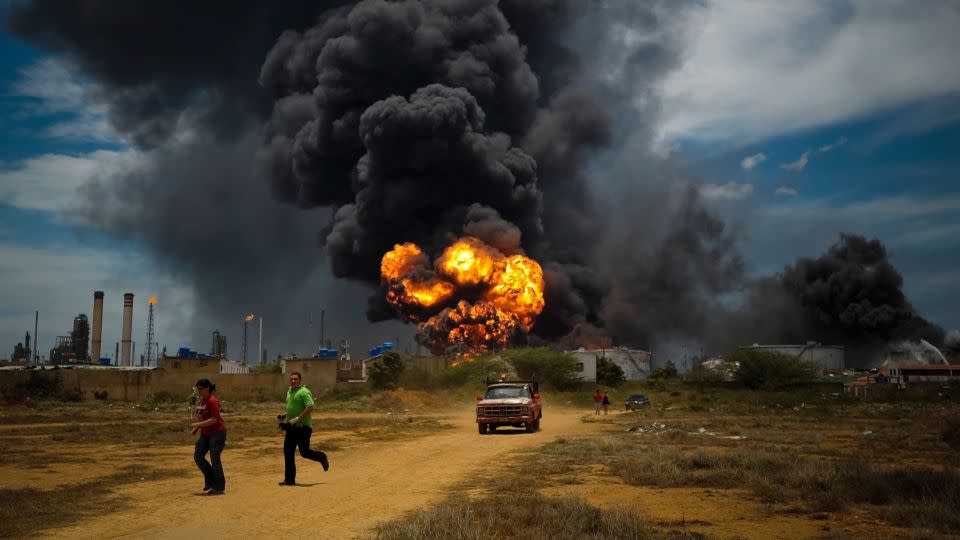
In 2012, an undetected leak at Venezuela’s largest oil and LNG refinery experienced a similar kind of vapor cloud explosion. When it ignited, likely by nearby vehicles, it set off a catastrophic blast that killed 47 people and destroyed or damaged more than 3,000 homes and buildings. It took firefighters four days to put out the blaze.
As the LNG industry grows in the US, experts and advocates are ringing alarm bells.
The way federal regulators approach natural gas safety should be comparable to their stringent approach to nuclear energy, said Naomi Yoder, a data manager who focuses on LNG at the Bullard Center for Environmental and Climate Justice at Texas Southern University. The probability of an accident in either industry is very low, but the impact could be catastrophic.
“Why wouldn’t we have robust regulations around that?” Yoder asked. “From a logical standpoint, it makes no sense. If the public knew what was in their back yard, there would be a public outcry, and these places wouldn’t exist.”
‘A totally explosive cloud’
A fire marshal’s report gives some insight into the Freeport LNG explosion in 2022. The fireball that terrified beachgoers burned up within a matter of seconds. No one was killed or injured, but the explosion propelled debris through the facility and left twisted metal and broken pipes in its wake. A pool of chemicals burned for 45 minutes but was eventually contained.
The incident report from the company was heavily redacted because of the “confidential business information” it contained, but it’s clear there were warning signs.
Freeport LNG’s investigators found a pipe valve had been blocked for days, leading to a buildup of gas and pressure that exploded when it was ignited, likely by an electrical spark. Something was visibly wrong with the blocked pipe, the fire marshal’s report noted, so much so that it had fallen off its supports — but plant personnel didn’t fix it in time.
Freeport LNG declined to comment on a list of questions from CNN but referred to its 2022 statement: “At no time did the incident pose a threat to the surrounding community,” the company said.
While experts told CNN that liquifying gas is one of the safer ways to transport it, significant risks remain. Natural gas itself is combustible; it’s primarily made of methane, a potent planet-warming gas, and it’s the fuel we burn in our homes to power things like gas stoves and furnaces.
But it’s the chemicals used to chill and condense methane into liquid that pose the highest risk of explosion at these facilities, experts explained.
Liquifying natural gas requires the use of heavy hydrocarbon chemicals. The gas is cleaned, chilled and condensed into a volume 600 times smaller than it started. The same amount that would initially fill a beach ball is eventually condensed by the chemicals into super-cold liquid that could fit inside a ping-pong ball.
A leak of those chemicals can form a so-called vapor cloud of hydrocarbons — compounds that are denser than the surrounding air and hug the ground like a fine mist. These clouds can even form outdoors if the wind is still. And vapor clouds will explode if ignited.
In windless conditions, “you can have the whole plant covered with a totally explosive cloud,” said Jerry Havens, the former director of the University of Arkansas’ Chemical Hazards Research Center and a chemical engineer, who dedicated his career to researching vapor cloud explosions.
“I’ve been fighting for years saying that I think this problem of explosions, particularly in zero wind, is being ignored,” Havens told CNN. The problem, as Havens sees it, is that federal safety regulations for LNG facilities don’t take the danger of these no-wind conditions into account.
Though vapor cloud explosions don’t happen often, their sheer power makes them extremely dangerous. In 2019, one such blast at an oil refinery in Philadelphia was strong enough to fling a 38,000-pound vessel — roughly the weight of a firetruck — across the Schuylkill River. A 2009 vapor cloud explosion at a Puerto Rico fuel storage facility caused a small earthquake.
But it’s a 2005 explosion at an oil refinery in Buncefield, England, that Havens points to as an example of the formidable power of vapor clouds. A petrol leak caused a fog-like haze of chemicals to spread over almost the entire refinery in windless conditions. The resulting explosion triggered the largest fire in England since World War II, a government incident report found, injuring more than 40 people and causing “enormous” devastation.
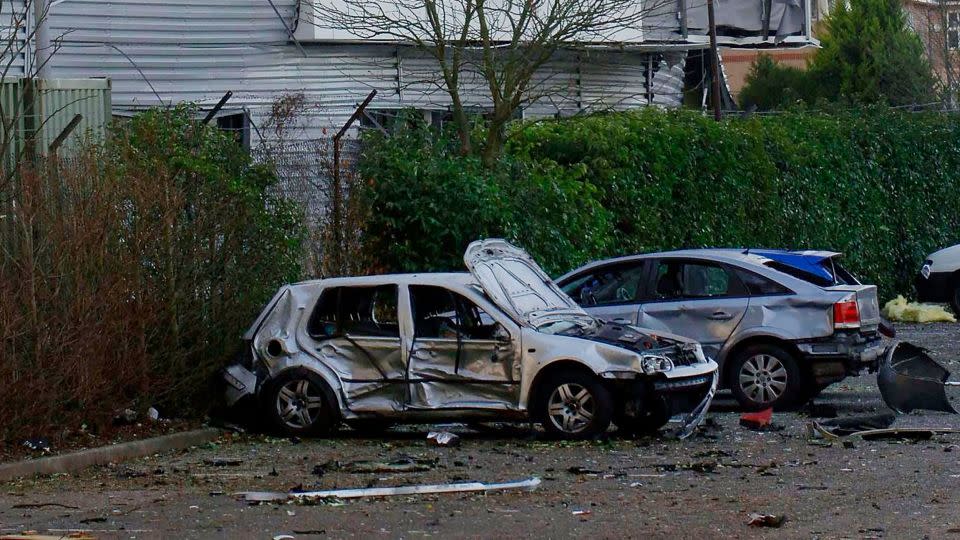
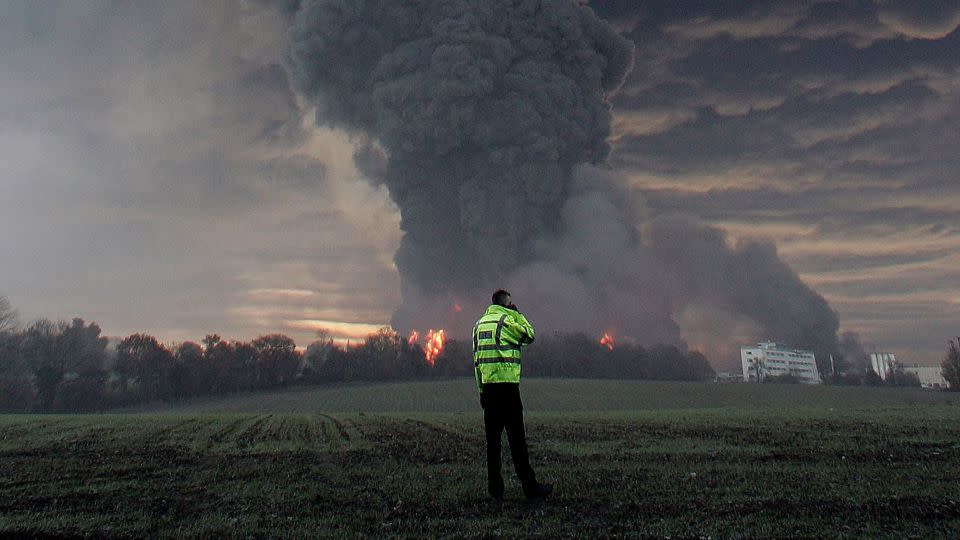
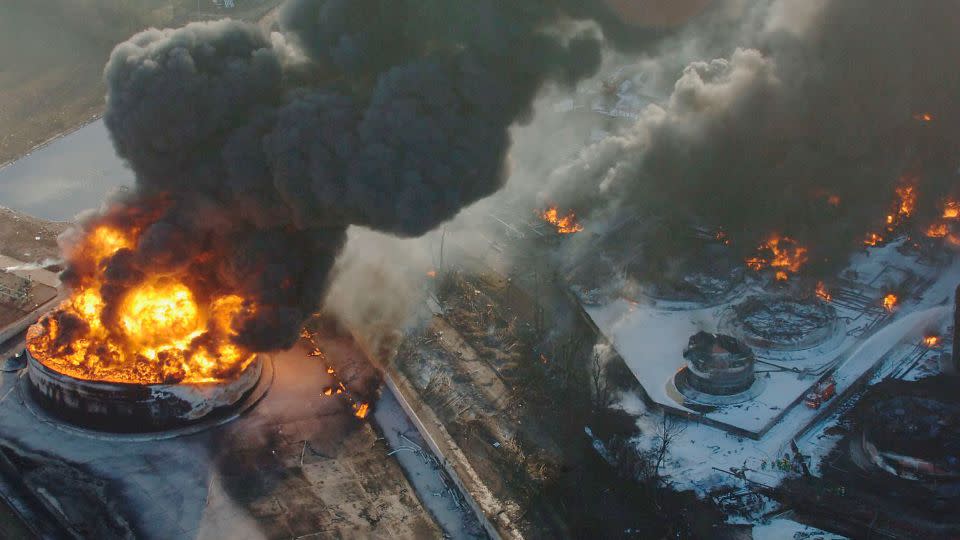
Buncefield and other vapor cloud explosions started as simple leaks — one of the most basic safety concerns of any facility that processes fuel or chemicals. Leaks don’t pose a large threat if they’re detected and contained quickly, said Faisal Khan, a professor of chemical and petroleum engineering at Texas A&M University and an expert on LNG safety.
“The greatest fear is that if we are not able to detect these leaks or spills quickly, and respond, this could easily escalate and cause other units to get damaged,” Khan said. “That would be a very significant event happening.”
Modern LNG facilities use double-walled storage tanks and pipes to help prevent leaks, and there are fail-safe systems to shut everything down in an emergency. Khan said that the industry is committed to safety, but mistakes can happen, especially if staff are overworked or not properly trained.
Employee exhaustion was a factor in the Freeport explosion; reports later found the plant was understaffed and employees working overtime were pushed to fatigue, leading workers to miss the broken pipe.
When Freeport LNG reopened, the company vowed to increase its staff by over 30% and cut down on overtime. The company declined to tell CNN how many people it has hired.
Industry in the driver’s seat
As the LNG industry balloons, safety regulators are trying to learn from the Freeport explosion. The Pipeline and Hazardous Materials Safety Administration, or PHMSA, is planning to issue a report investigating the failures at Freeport LNG this spring, which will help “inform regulatory updates,” according to an agency spokesperson.
But US officials have been aware of the threat of vapor cloud explosions for years.
When the Obama administration held a public meeting in May 2016 to discuss new safety regulations for the nascent LNG export industry, British officials gave a presentation on the Buncefield explosion and three others that destroyed entire facilities.
“Vapor clouds that have accumulated from sustained small leaks have caused major incidents with cloud spread, blast damage and multiple fatalities up to [greater than] 700 meters from source,” the British presentation concluded.
But PHMSA hasn’t updated its regulations for the industry in more than four decades, despite a 2020 law that required it to do so.
Moreover, the regulations rely on calculations from the industry. Combined with understaffed federal agencies, advocates say the industry is essentially policing itself.
“Our impression is that there’s not enough oversight — we’ve seen issues with several of these facilities already, and we just don’t have enough transparency to really know what’s happening,” said Louisa Eberle, a staff attorney at the Sierra Club focused on LNG. “It certainly seems like industry is in the driver’s seat given the highly technical nature of the regulations and lack of agency resources.”
The Center for LNG, an industry trade group representing Freeport LNG and other companies, told CNN in a statement that the current regulations are “not deficient or obsolete.”
The group has encouraged the Biden administration to adopt “risk based” rules that bring “LNG facilities into line with accepted and successful approaches to safety widely used by other industry’s facilities, from paint manufacturers to pharmaceutical companies,” CLNG spokesperson Hinson Peters said.
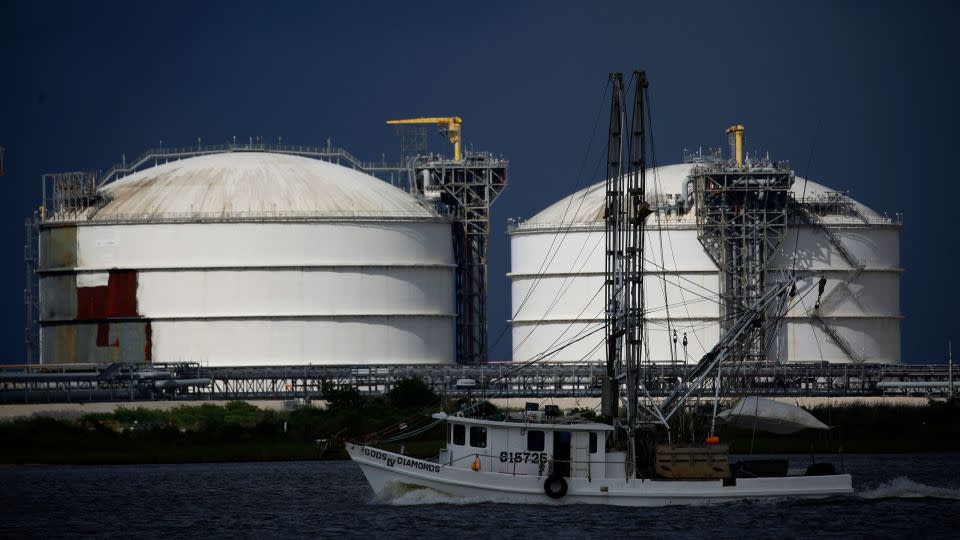
When CNN began reporting this story, PHMSA was on track to propose new regulations in May. That timeline has since slipped to the end of September, and experts and advocates fear it will be vulnerable to a rollback if former president Donald Trump is elected in November.
And while the Biden administration announced in January it is examining whether the industry is sending too much American LNG overseas – effectively pausing the approval process for several pending new projects – facility safety was not on its public-facing list of concerns.
“If you call (PHMSA) and talk to them they’ll say they’re working on it,” Havens said. “They’ve been working on it for seven years.”
PHMSA spokesperson Bruce Nilson told CNN in a statement the agency’s work on LNG safety is “just one of the many long-awaited actions that have moved forward under current leadership.”
“Overall, the past few years under this administration have been one of the most productive in advancing new safety requirements in the agency’s history and improving safety is PHMSA’s number one priority,” Nilson said.
‘The public’s certainly not aware’
There were no alarms or sirens to warn residents the day Freeport LNG exploded.
“We heard this ‘boom, boom, boom,” community activist Melanie Oldham told CNN. She and Freeport resident David Walker said the emergency sirens that usually blare during spills or accidents at other facilities never sounded.
Walker, whose home shook from the blast, said there were no alerts to tell people what happened, even as the smell of natural gas lingered in the air.
“It was a long time before we found out it was actually an explosion,” Walker told CNN. “There was not a call on the phone, no nothing.”
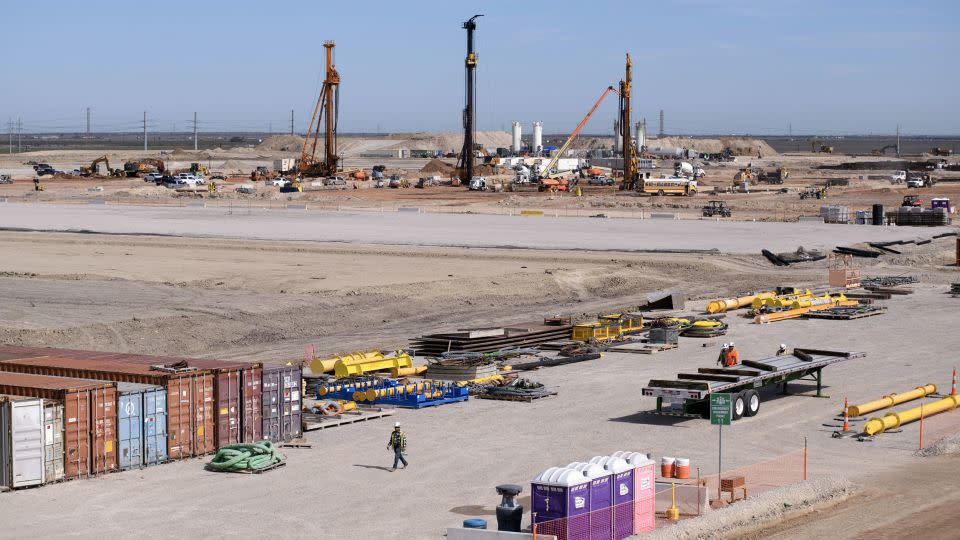
That’s what is most concerning to people like Doty, the former environmental inspector, and Yoder, the environmental justice data manager — LNG export facilities are springing up near people who are largely unaware of the risk they pose.
“The public’s certainly not aware of the potential safety concerns,” Doty told CNN.
Spokespeople for the Federal Energy Regulatory Commission and the LNG trade group CLNG said LNG companies provide copies of their emergency response plans to local emergency and fire departments.
“Emergency Response Plans in their entirety are made available to emergency responders,” FERC spokesperson Celeste Miller told CNN in an email.
But locals say Freeport LNG has been anything but transparent. No one from the company came to a February 2023 public meeting that was held with federal officials after the explosion, Oldham and Walker said.
Freeport declined to comment on its absence from the meeting. The company’s 2022 statement mentioned briefing first responders following the explosion but did not mention any meetings with the community.
Oldham told CNN she is trying to get an informational meeting with federal officials and Freeport LNG to ask for more transparency from the company.
“It’s a total brick wall, people have no idea,” Yoder said. “It’s hard to find the information, it’s not easily accessible and it’s not out there.”
Khan, the professor and LNG safety expert, told CNN that as more export terminals are built, companies must make communicating on safety a top priority to the communities their facilities are in.
“The public must be kept in confidence all the time, not just informed,” Khan said.
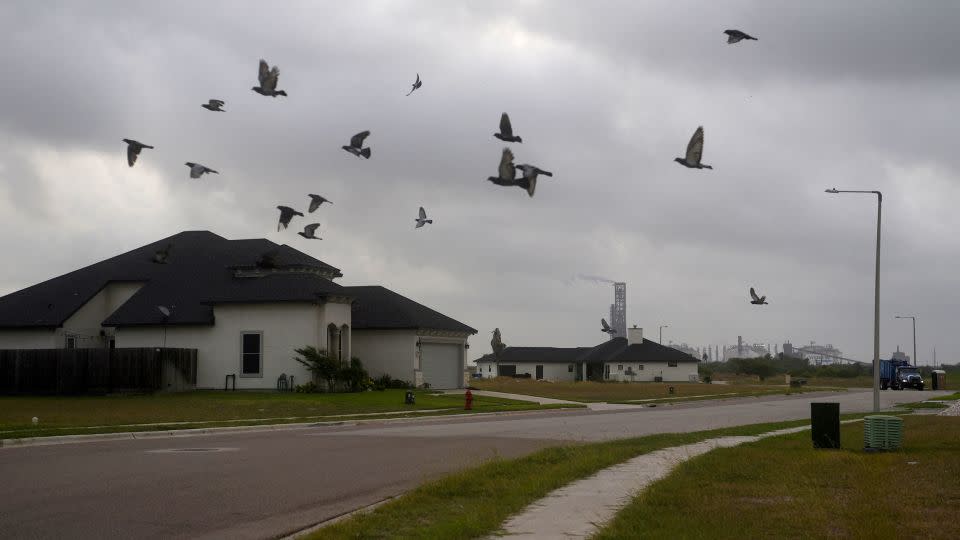
For more CNN news and newsletters create an account at CNN.com

 Yahoo News
Yahoo News 
